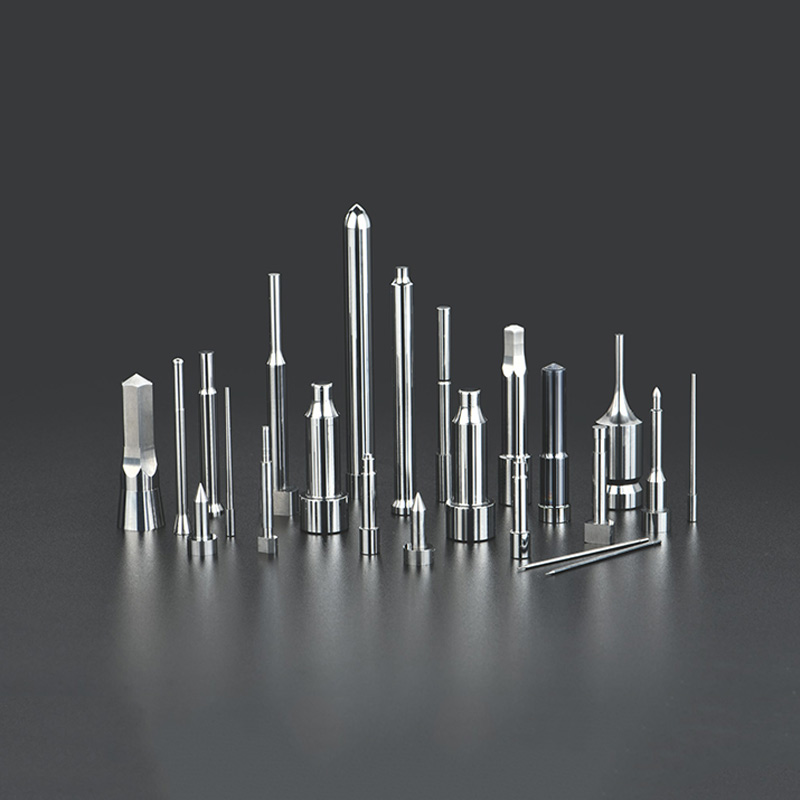Carbide Dies, known for their exceptional hardness, wear resistance, and durability, are essential tools in high-precision manufacturing processes, such as wire drawing, stamping, and extrusion. However, even the toughest Carbide Dies require regular maintenance and proper care to maintain optimal performance, prevent premature wear, and minimize production downtime. This article explores the key steps in cleaning, inspecting, and repairing Carbide Dies to ensure a long service life and sustained manufacturing efficiency.

1. Regular Cleaning of Carbide Dies
Cleaning is a critical first step in maintaining carbide dies. As dies are subjected to high pressure and heat, residues and debris from the processed materials can build up, especially in fine tolerance areas. These deposits can affect the precision of the die, leading to inferior product quality and increased wear.
Use Appropriate Cleaning Agents: Avoid aggressive chemicals or abrasives that could damage the die’s surface or alter its precision tolerances. Ultrasonic cleaning systems are often recommended for their gentle yet effective removal of contaminants.
Frequency of Cleaning: Clean carbide dies at regular intervals based on usage intensity. High-frequency cleaning may be necessary for dies that operate in heavy production cycles or harsh environments.
Inspect During Cleaning: As you clean, check for any cracks, surface irregularities, or scratches that could impact the die’s performance or signal the beginning stages of wear.
2. Inspecting Carbide Dies for Wear and Damage
Regular inspection is vital to ensure carbide dies function optimally over extended periods. Early detection of potential issues can prevent catastrophic failures and extend the die’s usable life.
Visual Inspection: Start with a visual check under adequate lighting to detect obvious signs of wear, cracks, or deformation. Microscopic cracks may also be visible, signaling that the die is reaching the end of its service life.
Use of Precision Measuring Tools: For high-tolerance dies, use micrometers, calipers, and profile projectors to measure critical dimensions and detect any dimensional deviations.
Check for Surface Integrity: Carbide dies should have a smooth, polished surface to reduce friction and wear. Any rough spots or pitting on the die surface could increase friction during operations and accelerate wear.
Document Inspection Findings: Keep a detailed record of each die’s inspection results, including wear patterns and identified issues. This allows for trend analysis and predictive maintenance scheduling.
3. Timely Repairs and Refurbishment of Carbide Dies
Even with regular cleaning and inspection, carbide dies will inevitably show signs of wear. Timely repairs and refurbishment can extend their operational life without requiring a full replacement.
Regrinding or Polishing: For dies with surface wear or minor deformation, regrinding or polishing the surface can restore it to near-original condition. Precision grinding equipment can remove worn layers and achieve the required tolerances.
Crack Repairs: Small cracks or chips on the die surface can sometimes be repaired using brazing or laser welding techniques. These methods fuse compatible materials onto the die surface, restoring its integrity.
Replace Worn Inserts: Many carbide dies are designed with replaceable inserts. When inserts are worn, they can be swapped out rather than replacing the entire die, reducing costs and waste.
Coordinate Repairs with Production: Plan repairs during scheduled maintenance or low production periods to minimize production disruptions.
4. Lubrication for Reduced Friction and Wear
Proper lubrication minimizes friction between the die surface and the workpiece material, reducing wear and preserving the die’s polished finish.
Select Suitable Lubricants: Different manufacturing processes may require specific lubricants tailored to reduce friction and heat for carbide dies. Ensure that the chosen lubricant is compatible with both the carbide material and the workpiece.
Ensure Adequate Lubricant Application: For continuous operations, install automatic lubrication systems to apply lubricant consistently throughout the production cycle. Manual lubrication may be suitable for shorter production runs.
Monitor Lubricant Quality: Regularly check the quality of the lubricant to ensure it remains effective. Contaminated or degraded lubricant can increase wear rather than prevent it.
5. Storage and Handling of Carbide Dies
Proper storage and handling prevent accidental damage and contamination, which could compromise the die’s performance.
Avoid Impact and Drop Damage: Carbide is hard but brittle, so handle carbide dies carefully. Dropping or bumping them against other tools can cause cracks or chips.
Protect Against Corrosion: Although carbide is highly resistant to corrosion, long-term exposure to moisture and corrosive elements should be avoided. Store dies in a dry environment and consider using protective coatings if necessary.
Use Dedicated Storage Solutions: Store carbide dies in a designated area with padded or compartmentalized storage to avoid contact with other metal tools or objects.
6. Implementing a Preventative Maintenance Program
A structured maintenance program can significantly improve the service life of carbide dies. This program should be designed based on production demands and the specific conditions of die use.
Set Maintenance Intervals: Schedule routine maintenance tasks (cleaning, inspection, lubrication) at consistent intervals. Higher usage rates may require more frequent maintenance.
Train Operators on Proper Die Use: Ensure that all operators are trained to use carbide dies correctly, including proper alignment, setup, and handling. Misuse or improper setup can increase stress on the die, accelerating wear.
Record Maintenance Activities: Keep a log of all maintenance tasks performed, along with any issues identified or repairs conducted. A maintenance record allows for data-driven decisions, such as when to replace a die or adjust production parameters.
Carbide dies are durable, but even the hardest materials require regular care to perform at their best. By following a consistent maintenance routine that includes cleaning, inspection, repair, lubrication, and proper storage, manufacturers can ensure that carbide dies deliver high performance over an extended period. Not only does this approach reduce production downtime, but it also maximizes the return on investment for each die, making regular maintenance an invaluable practice in precision manufacturing environments.








